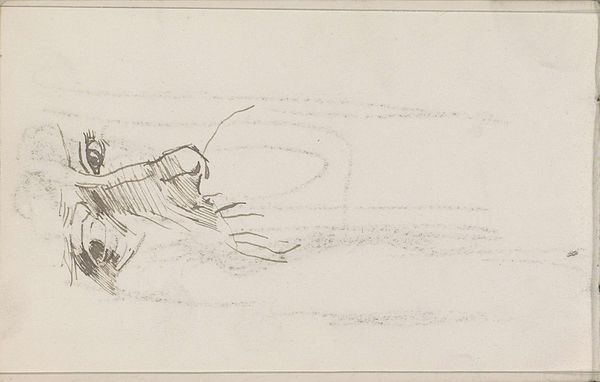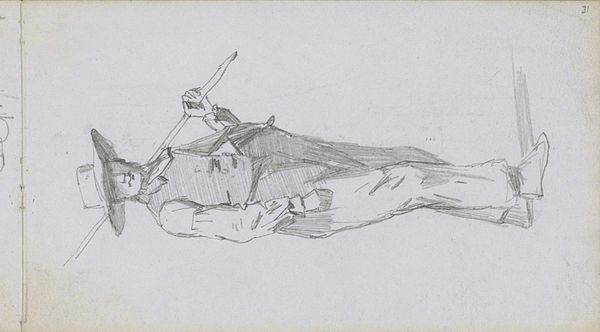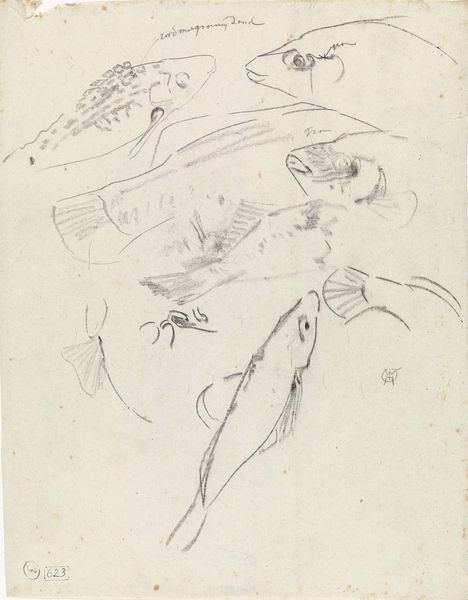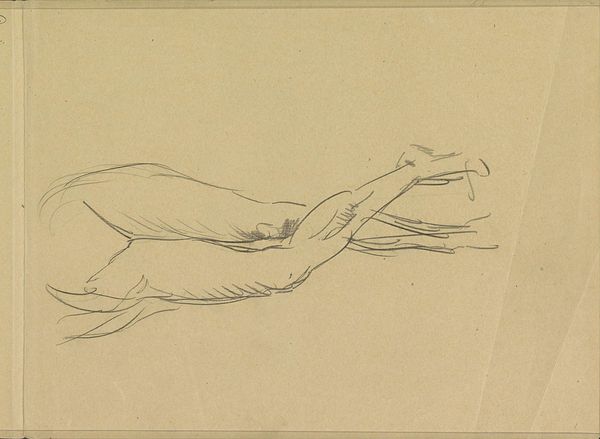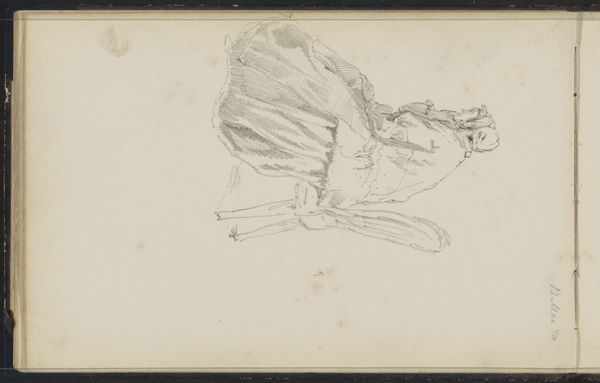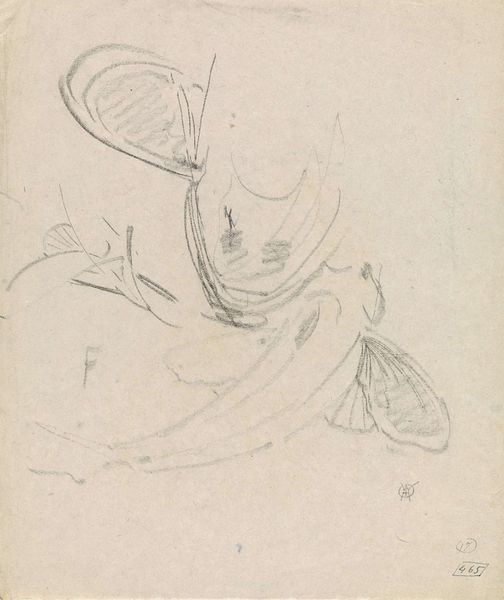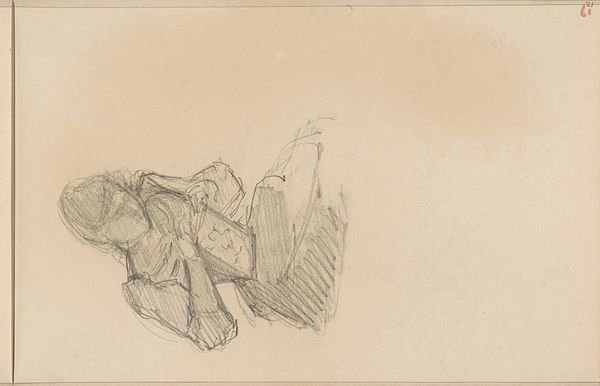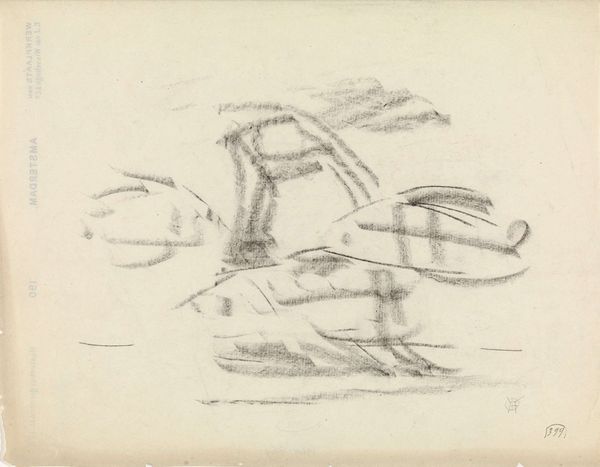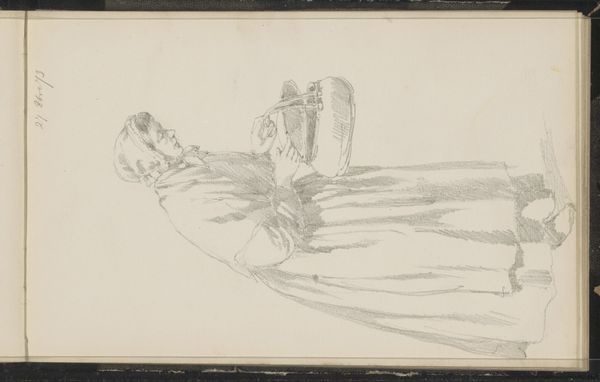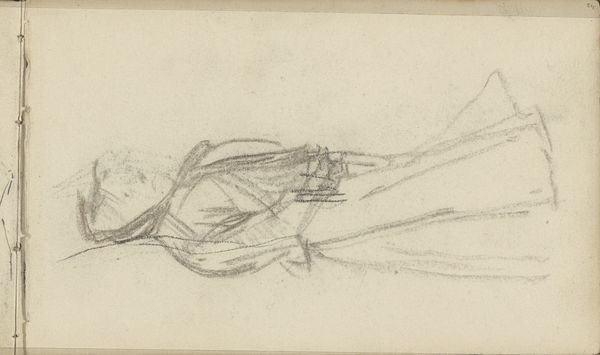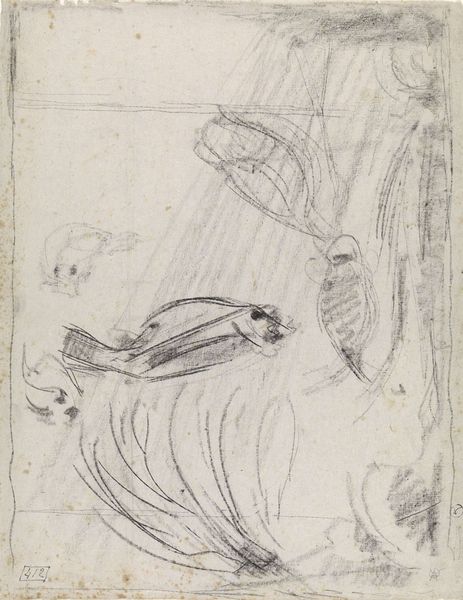
drawing, pencil
#
drawing
#
pencil sketch
#
landscape
#
romanticism
#
pencil
Dimensions: height 101 mm, width 168 mm
Copyright: Rijks Museum: Open Domain
Curator: This drawing, titled "Ankerboei," by John Linnell, dating from 1802 to 1882, strikes me immediately with its atmospheric subtlety. It’s executed in pencil, with a light touch that lends a dreamlike quality to a rather commonplace object. Editor: The first thing I notice is its simplicity, that pencil on paper, which for me immediately locates this work in a specific set of historical circumstances. Was this sketch preparatory? Is this pencil unique? It's almost an industrial record of materials, like graphite and paper, accessible materials turned toward the rendering of a buoy. Curator: It's interesting how you jump straight to the materiality of the work. I am captivated by the formal elegance. The lines, though spare, define the volume and the way the light suggests an almost ethereal existence. Consider the use of hatching to convey form; a complex structure rendered with essential lines. Editor: And that essential line work reduces the buoy, something so essentially tied to labor and nautical industries, down to…gesture. What labour extracted the materials used in its construction? How did these processes echo within its creation as a drawing? These material questions are so tied to the artistic labor visible here. Curator: Precisely. Through its distilled composition, the ordinary object becomes a study in form and light. There is also the element of Romanticism in the way the object hints at isolation, reflecting that trend in landscape art and the individual's place in the natural world. Editor: I find myself also pondering how it serves to obfuscate material origins even further – elevating, perhaps obscuring, something practical into the realm of fine art. Does that act enhance or detract from an understanding and acknowledgment of process? I lean toward seeing how it detracts, for now, but may come back to this buoy again. Curator: A worthwhile question indeed. Linnell offers us a study in observation, elevating utility through simple medium into contemplation on objecthood itself. Editor: Exactly! It gives one pause to think. Thanks for pointing out that formal elegance; perhaps both approaches do complement each other nicely.
Comments
No comments
Be the first to comment and join the conversation on the ultimate creative platform.

